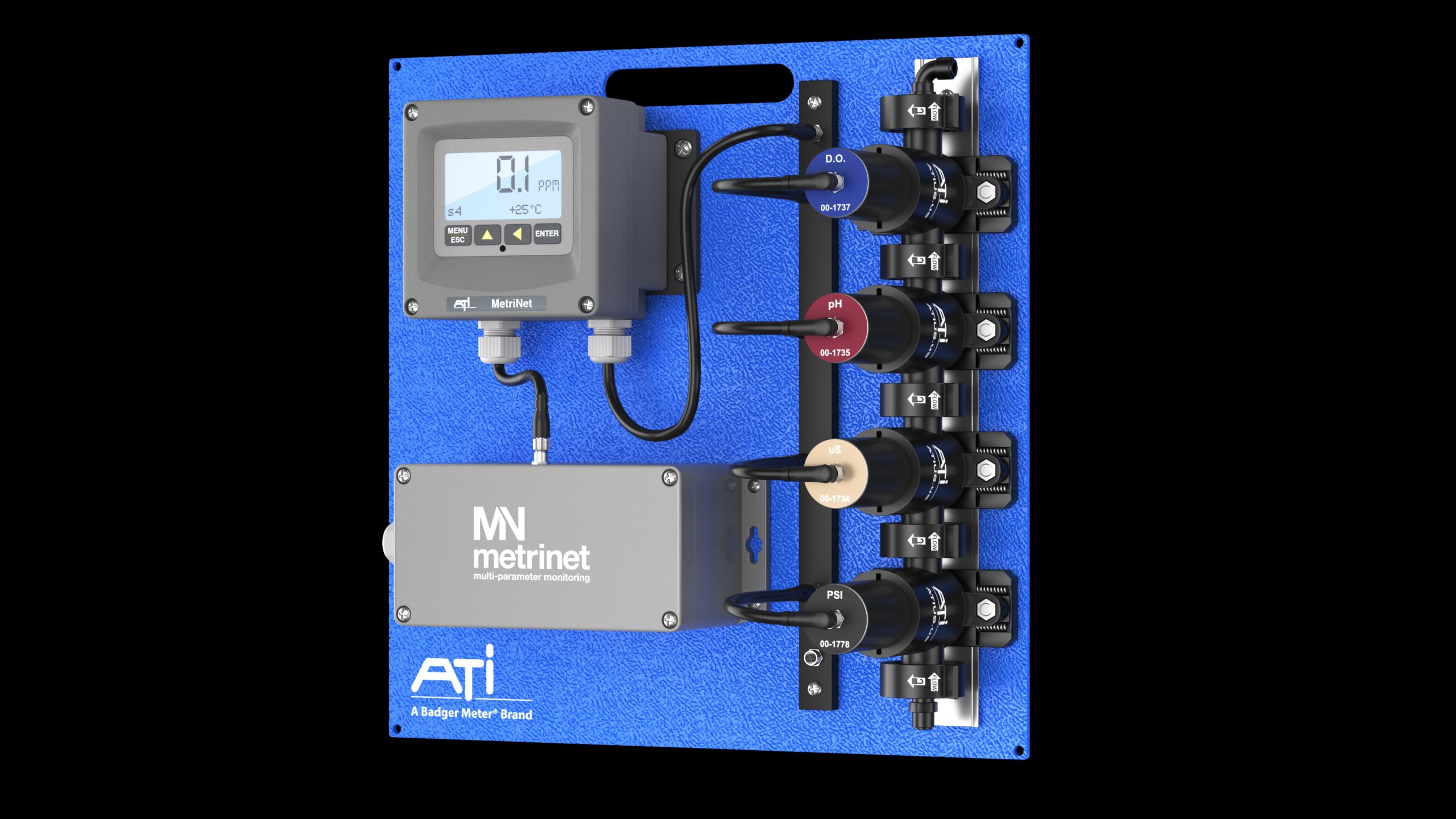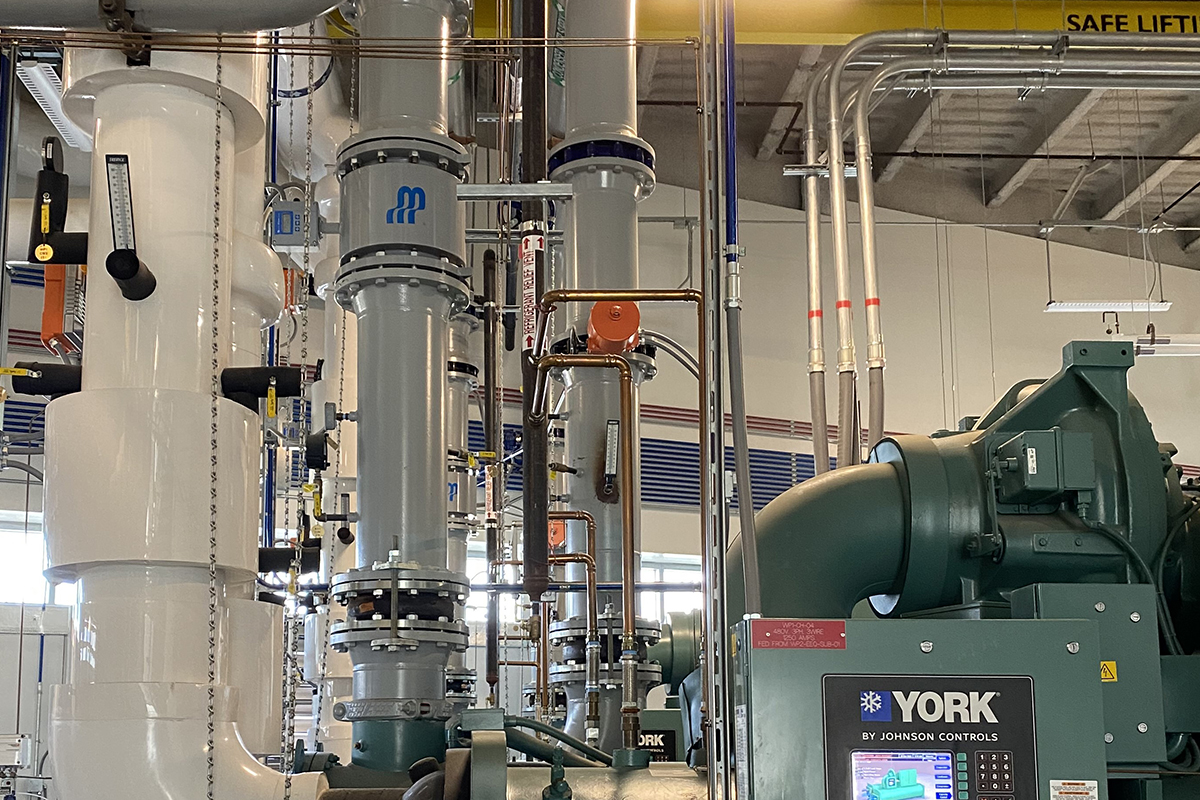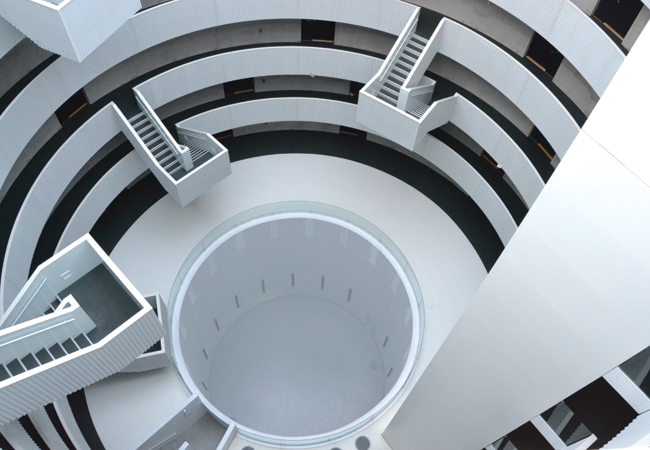
We are still learning how to design and use natural ventilation. Historically, the need for a supply of fresh air at a comfortable temperature resulted in distinctive and eye-catching architectural elements, designed to harness the freely available forces of wind and thermal buoyancy. A classic example is the windcatcher towers (badgir) in Iran.
Today, as we are squeezed for space on the ground and build upwards, more striking building features – such as atria, lightwells and solar chimneys – are finding their way into our architectural lexicon. As we recover from the ‘sealed box’ designs of the 70s and 80s, we need to learn to use these building elements to deliver a healthy indoor environment, while minimising energy use.

Ancient windcatcher towers (bagdir)
The good and the bad
Tall buildings offer opportunities for harnessing natural ventilation, not just from the wind but also from buoyancy. A tall atrium, linking multiple floors and filled with buoyant air, is a source of driving pressure for ventilation that, tapped into, can supply fresh air to occupants. The taller the atrium – and the greater the temperature difference from the outside (either hotter or cooler) – the greater the potential for natural ventilation.
Our model does not capture all facets of a buildings design. It is a blueprint for an optimised design; a starting point for more detailed modelling using multizone software, CFD and other tools
We still have some way to go, however, before natural ventilation is accepted as a viable alternative to mechanical systems, and we understand how to implement it most effectively, particularly in large buildings.
By their nature, ‘free running’ ventilation systems cannot deliver the desired internal environment at the push of a button, leading to the perception that natural ventilation systems are unreliable. Even worse, it can lead to air flowing in the wrong direction and an uncomfortable internal environment –particularly on the top storey.
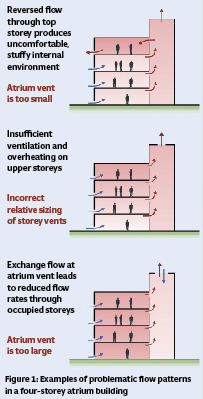
Figure 1:Examples of a problematic flow patterns in a four-storey atrium building
Some examples of problematic flow patterns in a four-storey atrium building are shown in Figure 1. Overheating on the top storey – either because of insufficient ventilation or recirculation of stuffy air from lower storeys (a reversed flow) – is common.
Exchange flows – in which simultaneous inflow and outflow occur at a high-level vent – can also reduce net ventilation flow rates, and contravene fire regulations because an inflow occurs at what should be an outlet vent.1
The need for simplicity
These problems can be avoided – and, indeed, have been avoided in a number of benchmark, naturally ventilated buildings. A notable example is Manitoba Hydro Place, in Winnipeg, Canada, a 22-storey building that uses three atria and a solar chimney for passive supply and extract of air.
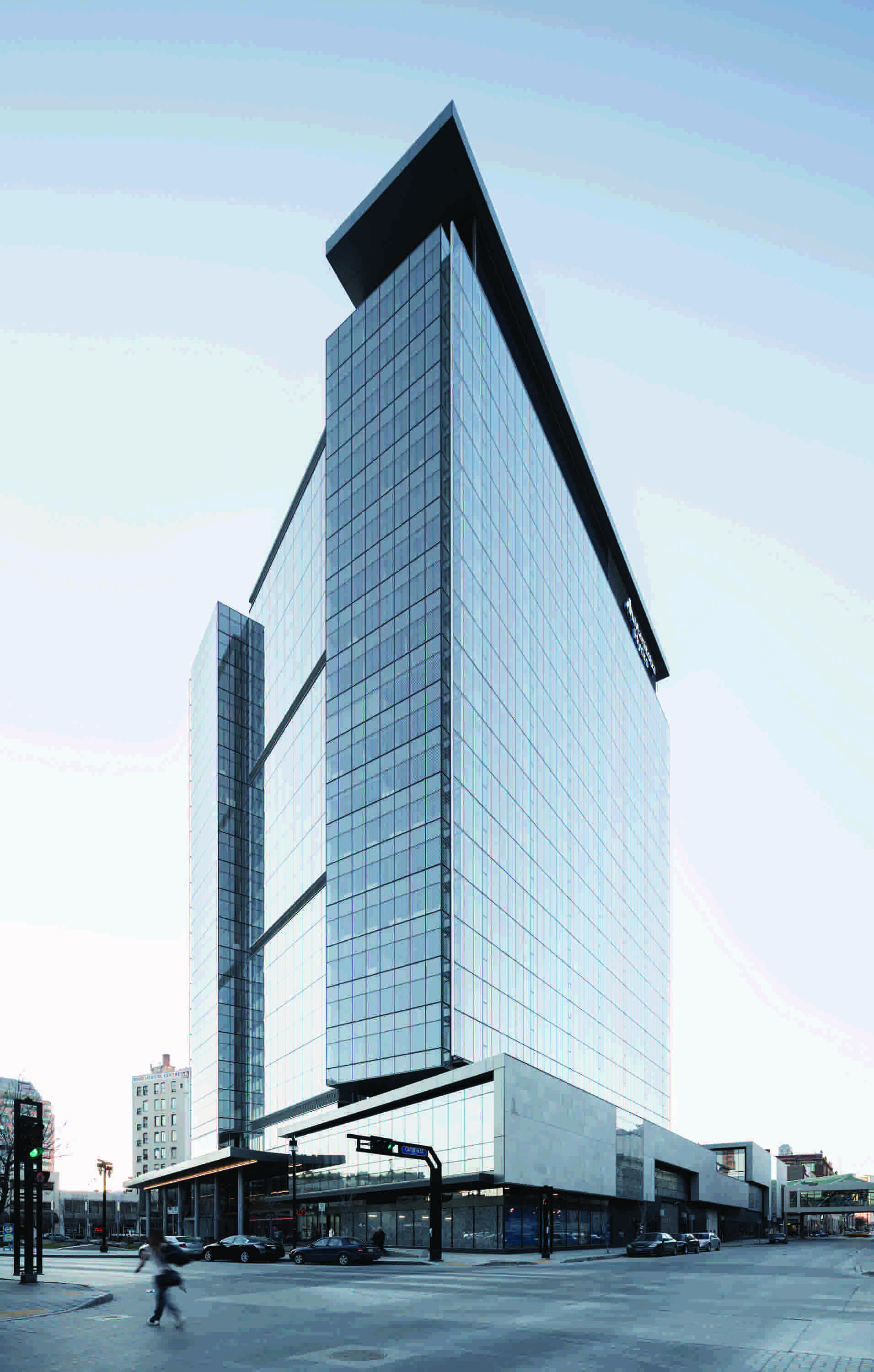
Manitoba Hydro Place uses three atria and a solar chimney for passive supply and extract of air
Its success lies not only in the building form, but also in the sophisticated BMS design – with more than 25,000 sensors – the commissioning of which would have been impossible without the client’s willingness to engage in a fully integrated design process.2
We would all like clients to aim for outstanding building designs, but what about projects on tighter budgets, or with clients – and tenants – who are less willing to engage with the details of HVAC system design?
The theme of this year’s CIBSE Technical Symposium was ‘Simple buildings, better buildings?’ – a question that was met with a resounding ‘yes’ from participants across the board, from architects to BIM specialists.
The take-home message, from my perspective, was that a simple design allows for better communication between all parties at all stages – from design to construction to commissioning and operation – maximising the chances of a successful outcome.
An intuitive design approach
My work with Professor Gary Hunt, at the University of Cambridge, focuses on developing simple, back-of-the-envelope methods that can be used to provide intuitive guidance to designers and clients.
Our method targets design at the conceptual stage, when the building form is fluid and high-level decisions on architectural elements, such as atria, are being made. We focus on the generic, multi-storey building form, with an atrium – or solar chimney, or similar ‘vertically spanning’ space – that acts as an exhaust stack.
The basis of our approach is a simple mathematical model that can be used to balance a number of core design parameters, including vent sizes, heat inputs, target air temperatures and building geometry.
There are three notable features of the model. First, we focus only on buoyancy-driven ventilation, designing for the ‘worst-case’ scenario in which wind is not available to assist ventilating flows. Second, all quantities are specified on a per-person basis – including vent sizes and heat gains – allowing for development of a demand-based design.
Finally, we quantify the ventilation performance of the atrium using an ‘atrium enhancement’ metric (see Figure 2) that compares the theoretical flow rate per person through the top storey with, and without, an atrium. Flows through the top storey are driven by the smallest stack height, making it the ‘worst performing’ storey in terms of ventilation. Aiming for an ‘atrium-enhanced’ flow on the top storey, therefore, ensures that the atrium is beneficial for driving flows through all storeys.
Figure 2: Definition of the atrium enhancement metric
Optimising design: rules of thumb
By running our simple model for a range of building operation scenarios – which can be done rapidly because of the simplicity of the model – we can optimise the building for natural ventilation and determine some rules of thumb for design.
An effective design largely comes down to the correct relative sizing of vents. When the atrium outlet is too small, compared to the storey vents, reversed flows through the top storey are common.
Conversely, exchange flows at the atrium outlet may occur when the atrium vent is too large, or when flows through the storeys are restricted. Modelling during the design of the Library of Birmingham led to balconies within its central atrium being aligned to allow air to pass unrestricted through the lower parts of the building, thereby avoiding exchange flows at the atrium outlet.3
The optimum design has equal per-person vent sizes at the atrium outlet and in the top storey (see Figure 3), providing our first rule of thumb. This shares control between all vents in the building, ensures a ‘forward flow’ on all storeys, and minimises the likelihood of air flowing in the wrong direction.
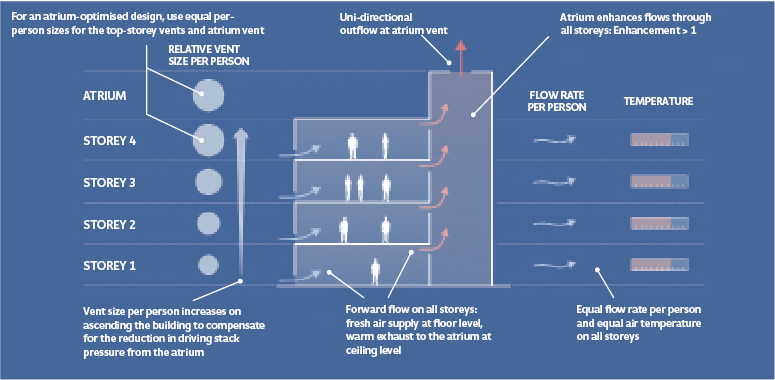
Figure 3: Ideal design 'blueprint' for an atrium building - shown for a four-storey building but, in principle, applicable to any number of storeys
A second rule of thumb is that vent sizes should increase in higher storeys, to compensate for the reduction in driving stack pressure from the atrium, thereby avoiding overheating on the upper storeys.
A final rule of thumb is that the atrium should extend at least one storey height above the top storey to ensure an ‘enhanced’ flow through all storeys. This may not always be possible, as the height of the atrium may be limited by planning or budgetary constraints. In these cases, it may be beneficial to disconnect the top storey from the atrium and provide its ventilation using a separate system. This strategy has worked at the Lanchester Library at Coventry University,4 and is planned for the James Dyson building at the University of Cambridge’s engineering department.
Simple models in the design process
Our model does not capture all facets of a building’s design, nor does it intend to. It is a blueprint for an optimised design; a starting point for more detailed modelling using multizone software, CFD and other tools.
Our approach is intended to provide simple and intuitive rules of thumb that are accessible to all – from architects and engineers to clients and tenants – and to encourage an inclusive approach to natural ventilation design.
For full details of the design approach, see the CIBSE Symposium conference paper5 and related publications by the author.
References
1.A Acred & G R Hunt (2013) ‘Multiple flow regimes in stack ventilation of multi-storey atrium buildings’. International Journal of Ventilation 12:1, 31–40.
2. K Stormont (2014) Ken Dale Travel Bursary 2014: Natural Ventilation in High Rise and its application to the Middle East. CIBSE, London.
3. G McCutcheon (2011) Library of Birmingham: Environmental modelling. Buro Happold, Bath.
4. B Krausse, M Cook & K J Lomas (2007) ‘Environmental performance of a naturally ventilated city centre library’. Energy and Buildings 39, 792–801.
5. A Acred & G R Hunt (2015) Optimising a multi-storey atrium building for stack ventilation. 2015 CIBSE Technical Symposium, London.
6. A Acred & G R Hunt (2014) ‘Stack ventilation in multi-storey atrium buildings: a dimensionless design approach’. Building and Environment 72, 44–52.
Andrew Acred is a research associate and Gary Hunt a professor at the University of Cambridge engineering department, in the fluid mechanics group




